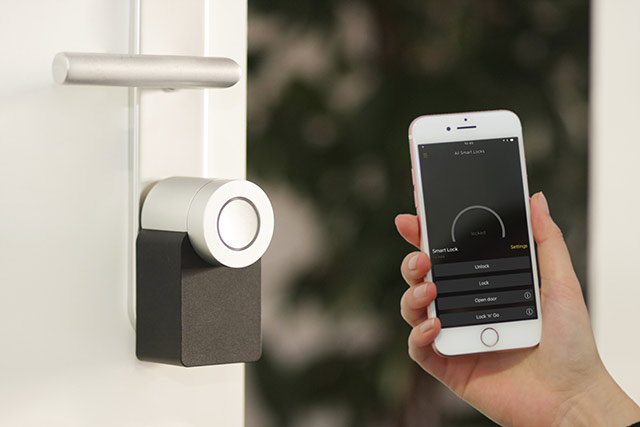The trouble with connected devices is that almost every traditional household device is being swallowed up by the internet, which is taking convenience to the next level by providing consumers with a myriad of options such as remote control and automation. This advancement in smart tech has always been dependent upon reliable, and powerful broadband network. Cox Internet Packages are one option that make robust connectivity more accessible for consumers with great affordability.
As per Statista, there were 1.6 billion consumer Internet of Things (IoT) connections in 2019 and this number is set to touch 2.6 billion by 2025, and that’s just households in North America. Meanwhile, according to Gartner’s forecast, there will be 20.3 billion connected devices by 2020 worldwide.
However, there’s a darker side to such extensive proliferation of connectivity. As we connect every other device to the household network, we become increasingly vulnerable to hackers. According to Forescout’s Research, most connected devices do not even possess basic cybersecurity protocol and hence wouldn’t even last three minutes if attacked by a cybercriminal, who can steal and exploit data.
Here’s a list of IoT devices that need precautionary measures before you let them into your household, else they could pose an increased risk to you in the form of exploitation, blackmail, identity theft, and spying:

1. Smart Locks: Unlocking Your Door to Cyber Attacks
Everyone wants a secure home and what better way than installing intelligent smart locks that can help homeowners monitor their doors, revoke and grant access to visitors, and do all of that remotely via their mobile phones. However, while connected to the network, these smart locks can grant access to perpetrators without any hassle.

At Black Hat USA 2019, researchers revealed how they were able to evade smart locks and break into a guest room at a high-end hotel. Since tech like this is relatively new and still in nascent stages, vendors face a number of challenges in their development. For example, third-party apps are incompatible with some systems, the pairing is not secure, and the locks have old hardware. Hence, there are chances that things will get worse before they become better.
Before incorporating these smart locks in your system, thoroughly research all vendors and types of locks out there. Upon installation, change the keypad number, always update firmware, and avoid installing apps that lets a lot of devices unlock a door.

2. Smart Doorbells: Ting Tong, the Hacker Is At The Door.
There is no limit to hackers to creativity since they did not even spare Amazon owned doorbells. Due to inadequate security protocol, the Ring doorbell sent the owner’s Wi-Fi credentials in unencrypted text while configuring it with the smartphone app and the home network. This gave an opening to a nearby hacker, giving access to the home network, and making it vulnerable to spying or even worse a cyber-attack.
Later, Amazon fixed the vulnerability in all of its Ring devices. However, Ring’s recent bragging on Instagram about tracking millions of trick-or-treaters this Halloween revealed its powerful surveillance reach as the company has been collecting, storing, and analyzing data on a granular level.

3. Connected Gas Pumps: Pumping Cyber Problems
Researchers at TrendMicro revealed that hacking connected gas pumps is one of the most discussed topics on the dark web. After monitoring the dark web marketplace, they discovered repeated requests on most dark web forums about how to hack gas pumps. Some forums had posted an entire rigmarole on hacking gas pumps along with a detailed guide on gas pumps mechanisms.
Attackers can remotely spy on delivery schedules, access credit information of consumers, manipulate gas prices, obtain license plate numbers, wreck the system, or extort money from an owner by holding the system hostage. The gas pumps became defenseless when owners couldn’t change default passwords of their devices, making brute-force attacks effective.

4. Smart TV: Not So Entertaining Anymore
A smart TV is seemingly an innocent device in a household and no one could ever fathom a threat associated with it. But that’s what attackers do, they attack from the least expected places, disguising maliciousness under innocent pretense. Once a smart TV is connected to a computer, where a user stores all its sensitive data, there’s a new chink in the armor.
A malware attack like Simplocker and Police Virus could hold the device to ransom and ask an owner to pay up so as to regain access to their device. An attack in 2018 on thousands of Android devices along with Android TVs via a worm called ADB.Miner enabled attackers to hijack device’s power in order to mine digital coins for criminals.

5. Smart Cameras: Who’s Surveilling Who?
Those surveillance devices are installed to protect against any nefarious intentions and a smart one provides an additional safety net, but sometimes things take a disastrous U-turn and let a hacker spy on the consumer, and then exploit the data collected on the consumer. There have been many instances of a user’s Nest smart cameras being hacked and camera owners being terrorized by hackers.
Vulnerability increased when smart device owners employed weak passwords and had no two-factor authentication. Google announced that the Nest wasn’t breached, but the use of weak passwords can lead to unfavorable repercussions for customers.
Tech Innovations are Directly Proportional to Crime Innovations
As the latest gadgets are swiftly imbuing into our lives, hackers are coming up with sophisticated methods in order to exploit whichever tech they can. Especially for early adopters, who are much more vulnerable since early innovations always have bugs and chinks, until they are uncovered and then fixed.
The risks highlighted related to connected devices aren’t intended to turn off consumers from using them since there is no denying that these latest gadgets provide excellent convenience and security as well. However, while utilizing the newest technology, it is essential to be circumspect and take precautionary measures in order to avoid falling prey to a cybercriminal.
This is a guest post article by Robert James


